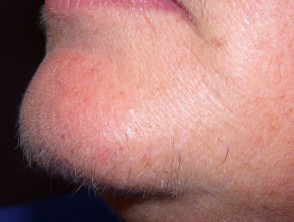Electrolysis and laser hair epilation are the only hair removal methods that may provide a permanent result.
Electrolysis involves the insertion of a small fine needle into the hair follicle, followed by a small electrical current that damages and eventually destroys the hair follicle. There are 3 different methods (modalities) to achieve this:
- Galvanic electrolysis
- Thermolysis
- Blend method
Galvanic electrolysis
This uses direct current electrolysis, which means a direct electric current is passed down a needle into the hair follicle where it creates a chemical reaction. This reaction converts tissue saline into sodium hydroxide, a caustic agent that then destroys the hair bulb.
Thermolysis
This uses a high frequency alternating current that is passed down through the needle to the hair follicle. The high frequency causes vibration in the cells of the hair follicle to produce enough heat to cauterize the hair bulb.
Blend Method
This combines both the galvanic and thermolysis modalities.
No clinical trials have been carried out to compare the methods and any claims of one method being more effective over the other is based on anecdotal evidence only.
How effective is electrolysis?
Effectiveness of electrolysis is dependent on the skill of the technician (electrologist) performing the procedure. Proper electrolysis requires accurate needle insertion technique and use of appropriate intensity and duration of current. The technician, based on the patient's pain threshold, sets the intensity measured in milliamps, and the duration of the current is controlled by how long the technician presses down on the hand or foot pedal. A common estimate of effectiveness is that 25% of treated hair don't regrow.
Electrolysis is a very slow method of hair removal that may also be prolonged by having to do repeat insertions into the hair follicle. It may take a minute or more to remove each hair using galvanic electrolysis.
The amount of pain experienced during the procedure is dependent on the individual's pain threshold. Topical anaesthetic creams applied one hour before the procedure may help to reduce discomfort. However, it is desirable to maintain some sensation as the pain is related to the amount of damage to the hair follicle.
Hirsutism
Who is suitable for electrolysis?
Almost anyone wanting to remove unwanted hair is a candidate for electrolysis. For men and women electrolysis is usually a safe and permanent process of hair removal. However, it is should not be used for patients with pacemakers because it can interrupt the electronics to cause potentially dangerous heart rhythms.
Complications
Some degree of redness about treated hair follicles for a few days is not uncommon.
Potential risks of electrolysis include scarring and increased or reduced pigmentation i.e. brown or white marks.
Secondary local infection with bacteria (impetigo) or reactivation of herpes simplex are also possible complications.
